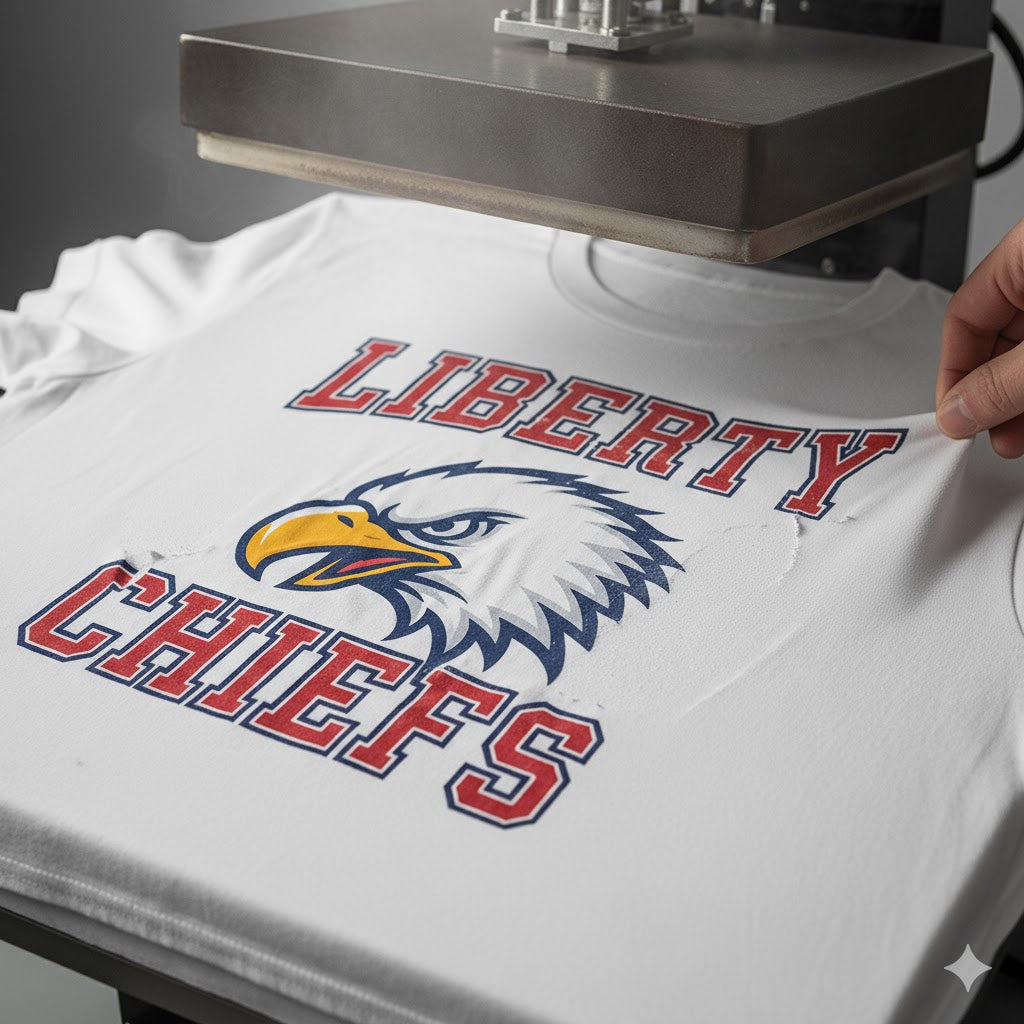If your DTF transfer isn't sticking, it could be due to issues with the film, adhesive, heat press settings, or the fabric you're applying it to. Here's a quick breakdown of the steps you can take to troubleshoot and resolve the issue:
- Check the Quality of Your DTF Film
- Verify Adhesive Application
- Adjust Heat Press Temperature and Pressure
- Ensure Proper Curing Time
- Consider Fabric Type Compatibility
- Use the Right Release Paper
Step-by-Step Guide for DTF Transfer Isn’t Sticking
Check the Quality of Your DTF Film
The quality of your DTF film plays a crucial role in ensuring a good transfer. If the film is old, damaged, or of poor quality, it might not properly adhere to the fabric. Always use high-quality DTF transfer films from trusted suppliers, and check for any visible flaws before printing. Using a high-quality film ensures that the transfer adheres better and lasts longer.
Verify Adhesive Application
The adhesive dtf powder is responsible for bonding the print to the fabric. If it's applied unevenly or in insufficient amounts, the transfer won't stick. Make sure you’re applying a uniform layer of adhesive powder over the print. After printing, ensure the adhesive is correctly melted and thoroughly cured before pressing. If the adhesive application is too thin or uneven, the transfer may not stick properly.
Adjust Heat Press Temperature and Pressure
Proper heat press settings are essential for achieving a successful DTF transfer. Ensure that your heat press is set to the correct temperature setting (usually around 160-180°C / 320-350°F) and pressure (medium to heavy). Insufficient heat or pressure can cause the transfer to peel off. Be sure to test your settings, as the fabric type may also influence the ideal temperature and pressure.
Ensure Proper Curing Time
The curing process is key to making the adhesive bond effectively to the fabric. If you don’t cure your print properly, it may not adhere as expected. Ensure that you let the printed film cool down before pressing it onto the fabric. Additionally, give the transfer enough time under the heat press to allow the adhesive to bond. Overheating can cause the film to melt or burn, while under-curing can prevent proper adhesion.
Consider Fabric Type Compatibility
Different fabrics require different transfer conditions. Ensure that the fabric you are applying the DTF transfer to is compatible with the transfer process. Fabrics with a high polyester content usually work well with DTF, while cotton or non-synthetic fabrics may require special adjustments. Always check the manufacturer’s guidelines for fabric recommendations to ensure compatibility.
Use the Right Release Paper
Release paper helps in the proper transfer of the image from the film to the fabric. If you're using low-quality release paper, it could prevent the transfer from adhering correctly. Use good-quality release paper that matches your transfer material and fabric. After pressing, check that the release paper is easily removed without disturbing the print.
What are the Common Causes of the DTF Adhesion Problems?
The common causes of DTF (Direct-to-Film) adhesion problems are primarily related to issues with the powder curing process, insufficient pressure or temperature during pressing, and problems with the DTF powder or film quality. Solving these issues involves optimizing the curing process, carefully controlling the heat press settings, and ensuring high-quality materials are used.
Common causes of DTF adhesion problems include low-quality DTF film, improper adhesive application, incorrect heat press settings, insufficient curing time, poor fabric compatibility, and using the wrong release paper.
Step-by-Step Guide:
Low-Quality DTF Film
The quality of your DTF film is crucial for adhesion. Poor-quality or damaged films may cause the print to peel or fail to adhere properly. Always use high-quality DTF films from reputable suppliers. Check the film for any damage or imperfections, such as wrinkles or scratches, before printing. Fresh, good-quality film ensures better adhesion and smoother transfers.
Improper Adhesive Application
Adhesive powder must be applied evenly and in the right amount for proper bonding. If the adhesive is uneven or insufficient, the print will not stick well. Apply a uniform, generous layer of adhesive to the printed design, ensuring it covers all areas evenly. After applying the adhesive, make sure it’s properly melted and fully set before proceeding with the heat press.
Incorrect Heat Press Settings
Incorrect temperature, pressure, or timing can lead to adhesion issues. DTF transfers typically require a temperature range of 160-180°C (320-350°F) with medium to heavy pressure. If your heat press is too hot, it can burn the design; if it’s too cold, the adhesive won’t bond properly. Always ensure the heat press is set to the correct settings, and adjust as needed for the fabric you're working with.
Insufficient Curing Time
The curing time is essential for ensuring the adhesive properly bonds to the fabric. If the transfer is under-cured, it can result in poor adhesion and premature peeling. After printing and applying the adhesive, allow the print to cool down before pressing it onto the fabric. Also, make sure the curing time under the heat press is sufficient (usually around 10-15 seconds) to activate the adhesive properly.
Poor Fabric Compatibility
Not all fabrics are suitable for UV DTF transfers. Synthetic fabrics like polyester work best, while cotton and other natural fibers may require special adjustments. If you're using a fabric that isn’t ideal for DTF, consider adjusting your heat press settings or using a different fabric type. Always check the compatibility of the fabric before beginning the transfer process.
Using the Wrong Release Paper
Release paper is critical for transferring the design to the fabric. Using low-quality or incompatible release paper can prevent the transfer from sticking properly. Always use high-quality release paper designed for DTF transfers, and ensure it’s suited for the type of fabric and transfer you're working with. This will ensure smooth removal of the film without damaging the print.

